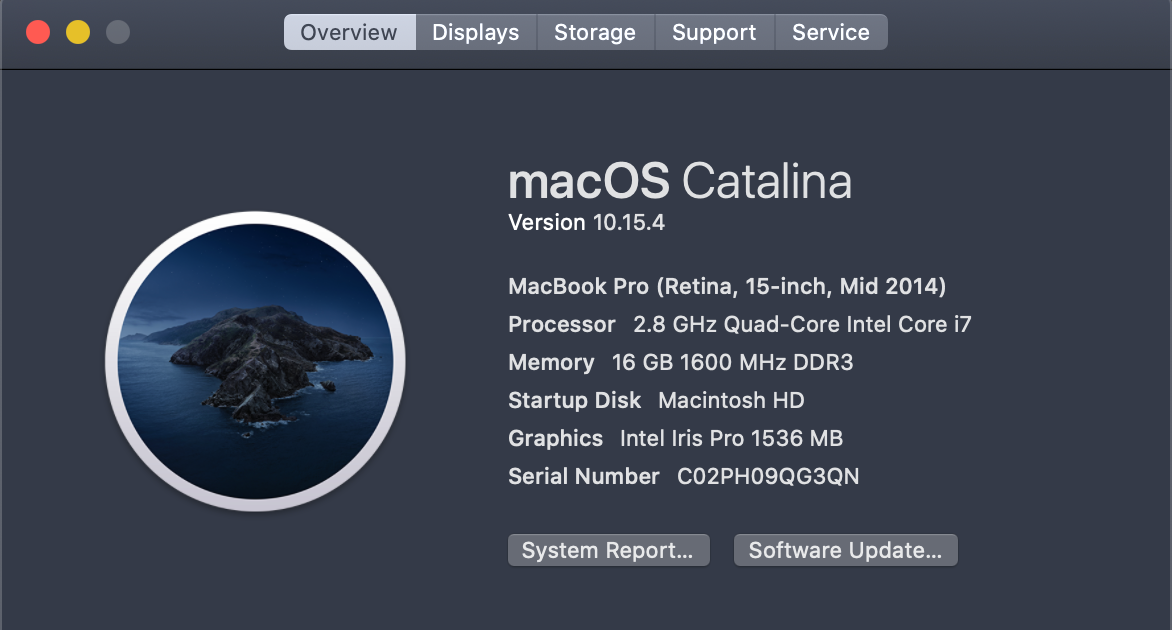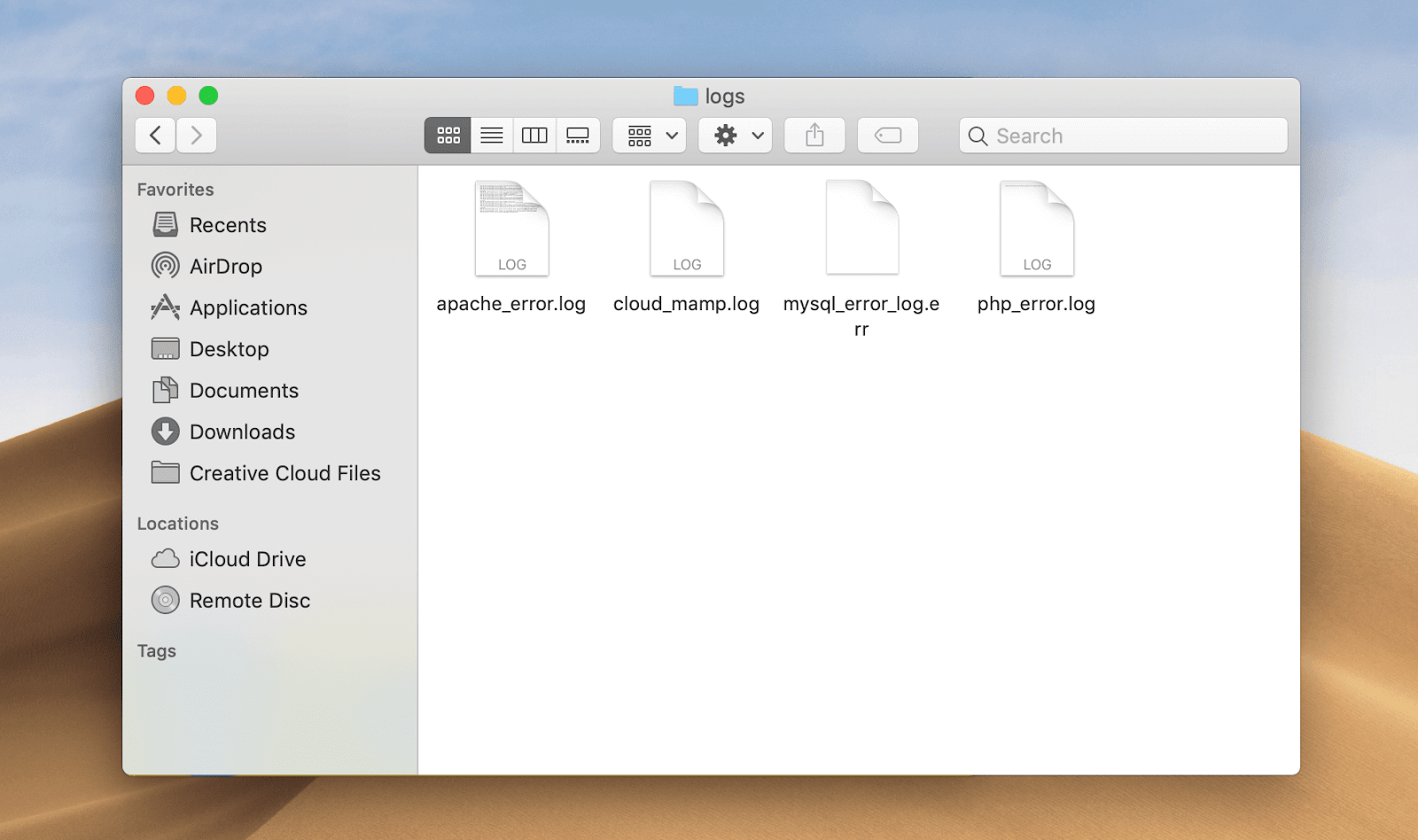

- Mac os upgrade to sierra rspec mysql error for free#
- Mac os upgrade to sierra rspec mysql error how to#
- Mac os upgrade to sierra rspec mysql error for mac os x#
- Mac os upgrade to sierra rspec mysql error for mac os#
Mac os upgrade to sierra rspec mysql error for mac os#
I am aware of the web server software available for Mac OS X, notably MAMP. To create a local web server, all you need to do is configure Apache and install MySQL. Furthermore, Apache and PHP come packaged with Mac OS X.

I did follow the instructions, I made the USB, then I restarted my Mac mini and I did hold the Option in order to boot with USB but when I click on the USB icon to boot, the system goes back to normal boot Mac OS X Lion. So most UNIX software installs easily on Mac OS X. This patch maker for macOS High Sierra does NOT work on my Mac mini 2007, A1176, Core 2 Duo 1.83GHz, 4GB Ram.

Mac os upgrade to sierra rspec mysql error for mac os x#
If you have installed Apache, PHP, and MySQL for Mac OS El Capitan, read my post on Updating Apache, PHP, and MySQL for Mac OS X Sierra. Note: This post is for new installations. After you complete this post, you should upgrade PHP on Mac OS X. PHP Update: Mac OS X Sierra comes pre-installed with PHP version 5.6, however the latest version of PHP is 7.1.
Mac os upgrade to sierra rspec mysql error for free#
This Bash-Fu brought to you for free by my commitment to all things Open Source.MacOS Update: While these instructions still work, there are new posts for recent versions of macOS, the latest being Install Apache, PHP, and MySQL on macOS Mojave. When it came up I quit the installer and then shut down the mac. Then I downloaded High Sierra from the app store. Then after it started up I opened the app store to update to the latest version of Sierra. I then reinstalled Sierra using a USB thumbdrive installer. If you're unable to reinstall OS X Lion, you'll need to have access to another Mac to be able to create a bootable USB drive for El Capitan.
Mac os upgrade to sierra rspec mysql error how to#
Let's put it all together and make you a oneliner: $(ps auxww|sed -n '/sed -n/d /mysqld /') -verbose -help|grep '^log'Įxecute that one command and you will get a list of all of the logs for your running instance of mysql. I fixed it by throwing away the High Sierra installer in the applications folder. Once you have OS X El Capitan running, you can then upgrade to macOS High Sierra: How to upgrade to macOS High Sierra. LO AND BEHOLD! all of the advice in the world was not going to help me because my log file is kept in a completely non-standard location! I keep mine in /tmp/ because on my laptop, I don't care (actually I prefer) to loose all of my logs on reboot. I can exploit this feature to find out EXACTLY where my log files are, like so: /opt/local/libexec/mysqld -verbose -help|grep '^log' The values are the result of your compile time configuration, my.cnf file, and any command line options. The mysqld can be called with -verbose -help to get a list of all command line options (and here is the important/valuable part!) followed by the values that would be used if you were launching mysqld instead of just checking the help output. Let's take this lesson a bit further.įrom the first line you can see the my daemon is /opt/local/libexec/mysqld. Root 76 0.0 0.0 600172 688 ? S 12:30AM 0:00.02 /bin/sh /opt/local/lib/mysql/bin/mysqld_safe -datadir=/opt/local/var/db/mysql -pid-file=/opt/local/var/db/mysql/rbronosky-mbp.pidįrom that you can see that my datadir is /opt/local/var/db/mysql (because I installed via MacPorts). # Note: For zsh compatibility put quotes around the grep regexĬan you post the result of that command here please? Mine looks like this: _mysql 101 0.0 0.3 112104 13268 ? S 12:30AM 0:13.20 /opt/local/libexec/mysqld -basedir=/opt/local -datadir=/opt/local/var/db/mysql -user=mysql -pid-file=/opt/local/var/db/mysql/rbronosky-mbp.pid But remembering that Affinity had an issue early on with El Capitan, just wondering if there is an estimate as to when Affinity will be. I dont upgrade that quickly hoping some of the earlist issues will get a fix. # to keep it from matching its own process. I have read on a few sites that Mac OS upgrade to Sierra will be available tonight. # Putting brackets around the first char is a `grep`+`ps` trick The following command will give you (and us) a good indication of where to look. Each of which will place your data dir and/or logs in different locations. As Chealion mentioned, there are several ways that your mysql could have been installed.


 0 kommentar(er)
0 kommentar(er)
